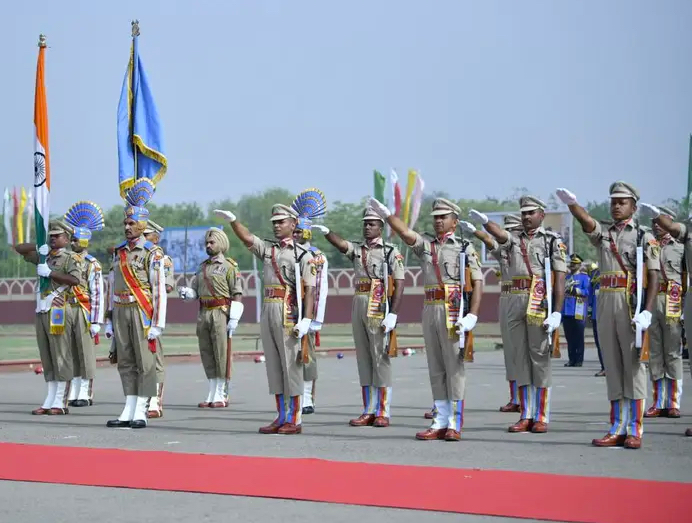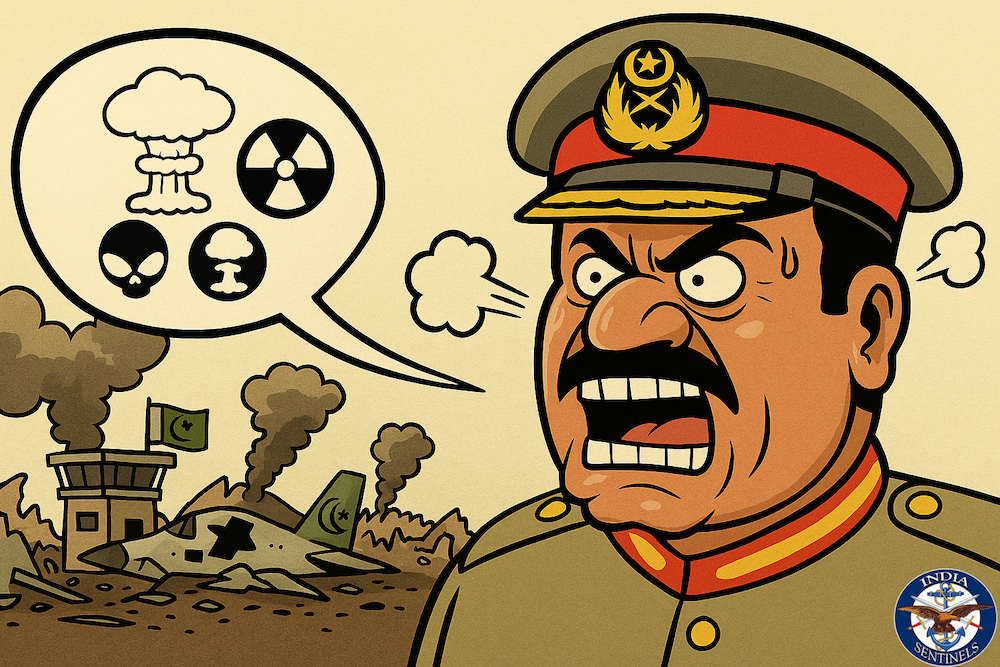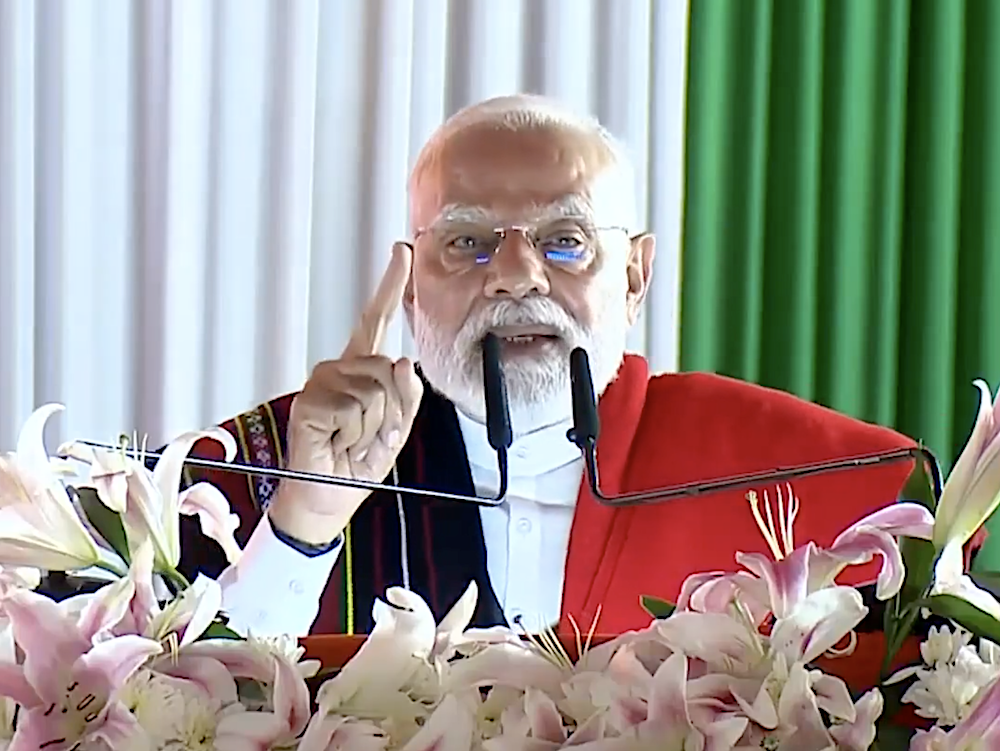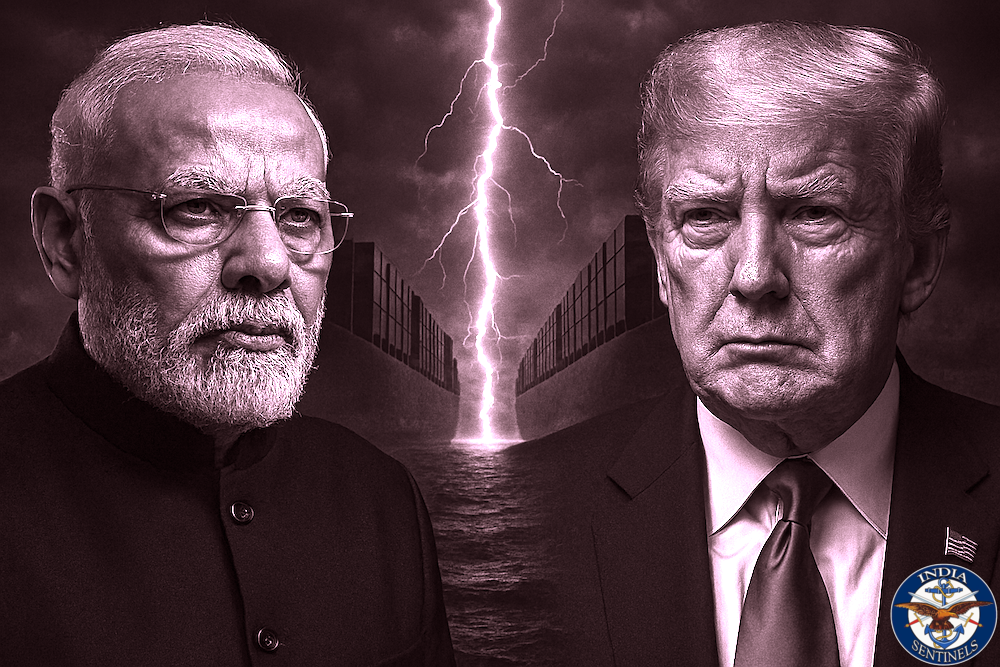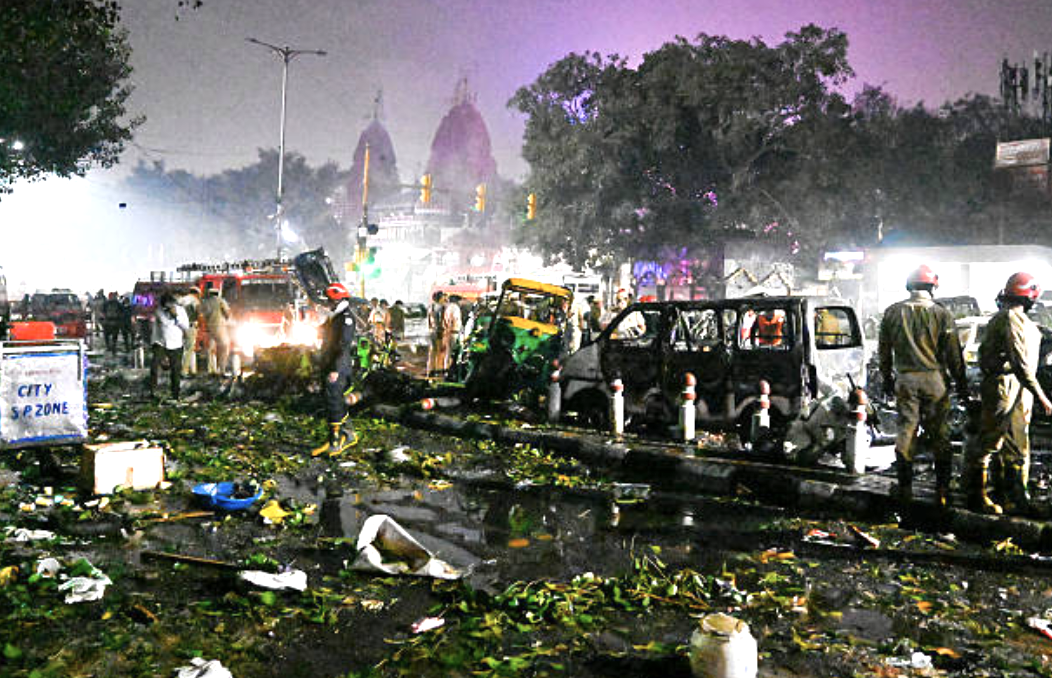 The site of the car-bomb blast near Delhi’s Red Fort.
The site of the car-bomb blast near Delhi’s Red Fort.
On the evening of November 10, the national capital was rocked by a powerful explosion that tore through a slow-moving Hyundai i20 at a traffic signal outside Red Fort Metro station. The blast claimed 13 innocent lives and injured more than double that number, sending shockwaves not only through Delhi but across the entire nation.
The incident left police and civil authorities initially bewildered. The absence of a crater and shrapnel – hallmarks of improvised explosive devices designed for maximum carnage – raised questions about whether this was a terrorist attack or an accidental explosion.
Read also: SC judgment on CAPF officers is final. Implementation must begin
A Measured Response
The government’s response to the attack was notably measured and muted, despite the explosion occurring near the iconic Red Fort. Whilst the public remained convinced this was a terror incident, the government appeared constrained by geopolitical considerations, seemingly reluctant to directly implicate Pakistan.
The scale of the incident and subsequent seizures suggested involvement that could not have been orchestrated without support from Pakistan’s deep state. Yet despite overwhelming public perception of foreign involvement, the government remained silent for two crucial days. Only on November 12, 2025, was the incident officially labelled as terrorism, described obliquely as “an act perpetrated by anti-national elements” – effectively giving Pakistan a clean chit.
Read also: Democratic Dilemma – How elections compromise border security
White-Collar Terror Paradigm
The 9/11 attacks on the Twin Towers in New York exemplified what can be termed white-collar terrorism – highly educated, professionally trained individuals creating havoc that temporarily destabilized not just America but placed the entire South Asian region in the crosshairs of international terrorism.
That attack’s aftermath saw international forces deployed in Afghanistan, with Pakistan serving as the main logistical and operational support base for US forces. In return for this cooperation, America largely ignored Pakistan’s terrorism-driven agenda to destabilize Kashmir. The ultimate irony is that the United States failed catastrophically in Afghanistan, withdrawing in disgrace after being defeated by the Taliban, who now rule the country with an iron fist.
Read also: Ladakh Unrest – When promises meet reality on India’s strategic frontier
New Security Challenge
India now faces a similar paradigm. The November 10 attack represents a disturbing evolution in white-collar terrorism, where Kashmir and Uttar Pradesh-based doctors working at the privately run, University Grants Commission-recognised Al-Falah University in Dhauj, Faridabad, conceptualized, planned and executed the operation.
The attack achieved only partial success due to premature triggering of the explosive, likely caused by panic and anxiety. Had the device detonated as planned, the terrorists intended to create chaos and devastation across multiple locations spanning a vast geographical area. Evidence gathered by Jammu & Kashmir police points towards the involvement of Pakistan-based Jaish-e-Muhammed and Ansar Ghazwat-ul-Hind, an al-Qaida offshoot.
Read also: My Identity Crisis – The CAPF soldier’s perennial dilemma
Op Sindoor’s Limited Impact
Following the Pahalgam attack, the government of India declared that every Pakistan-sponsored terrorist incident would be treated as an act of war. Operation Sindoor was launched with the aim of putting Pakistan on the defensive and forcing it to cease supporting cross-border terrorism.
However, the strategy has had limited impact. Pakistan’s deep state has made numerous attempts to spread terror post-Sindoor. According to security experts, several attacks have been foiled, each yielding actionable intelligence. Disturbingly, each attempt has involved local modules, with some cases revealing direct evidence of Pakistani involvement through seizures of Pakistani voter identity cards and other incriminating items.
Read also: PM’s Manipur Visit – A welcome initiative, but is it too late?
Pakistan’s Strategic Shift
The New Delhi terror attack marks a temporary but significant strategic shift in Pakistan’s approach to fanning cross-border terrorism in India and Kashmir. Previously, Pakistan relied heavily on foreign fighters, but this pool has temporarily dried up. However, infiltration will likely resume once terrorist camps destroyed during Operation Sindoor are reorganised and regrouped.
There is likely to be a surge in the training of local Kashmiri youth, including white-collar professionals who feel wronged and radicalized. Pakistan appears to have learned lessons from the Pahalgam attack, where direct involvement drew both nations into full-fledged conflict, resulting in significant moral and material damage to Pakistan. To avoid such direct confrontation, Pakistan’s deep state has devised a new strategy: involving homegrown, local white-collar professionals to orchestrate terror attacks whilst avoiding direct culpability.
Read also: Beyond Fencing – Complex reality of India’s most vulnerable border
Radicalization of Professionals
This strategy cynically exploits highly dissatisfied and radicalised white-collar professionals who harbour grievances for various reasons: perceived injustice over the abrogation of Articles 370 and 35A, feelings of discrimination against Kashmiris working as professionals and students across India, and unfulfilled political promises.
By engaging such disaffected homegrown professionals – doctors, students and others – Pakistan’s deep state has found an alternative method of continuing terrorism in Kashmir whilst escaping responsibility and international scrutiny.
Read also: End Colonial Charade – Implement SC ruling on CAPF officers now
Islamabad’s Calculations
Pakistan’s temporary strategic shift has its genesis in factors that directly impact the country’s economy and stability. The deep state needs to avoid telltale signs of direct involvement that could trigger international fallout, particularly affecting its borrowing leverage with institutions like the International Monetary Fund and the World Bank. Such involvement would also invite diplomatic and military responses that Pakistan cannot afford.
Pakistan must also keep the Financial Action Task Force satisfied. Although Pakistan was removed from FATF’s grey list in 2022, the organization issued a fresh warning in October 2025 that removal provides no guarantee of immunity from global monitoring on money laundering and terror financing issues. However, with Pakistan currently in the good books of the Trump administration as an important geopolitical ally, the chances of FATF action remain remote.
Read also: Despite compulsive détente – China frontier paradox remains for India
Pakistan’s Domestic Pressures
Another critical factor in Pakistan’s temporary strategic climbdown from direct involvement in Kashmir is its precarious internal security situation. Tehrik-e-Taliban Pakistan and the Baloch National Army have wreaked havoc with Pakistan’s military, creating political and economic instability.
The situation has worsened with ongoing confrontation along the Durand Line with Afghanistan, committing a heavy component of Pakistan’s army to its western border. These domestic and international compulsions have forced Pakistan to shift focus from direct involvement whilst attempting to maintain strategic leverage in regional conflicts by claiming the moral high ground.
Read also: Border security or border combat? India’s western challenge
New Delhi’s Mounting Challenges
India’s national security establishment faces enormous internal and external security challenges. Internally, the situation impacts Kashmir, Punjab and Rajasthan. Externally, the entire western front – from the line of control (LoC) in the north, extending southward along the international border to Sir Creek – remains vulnerable. India’s complete coastline may represent a new frontier for Pakistan’s deep state to exploit in spreading terror.
The identity lines between foreign infiltrators and homegrown terrorists have blurred, making distinction and detection increasingly difficult. The widespread logistical operations carried out to procure explosive materials indicate an intent to spread terror anytime and anywhere, making the task of security agencies enormous and extraordinarily challenging.
Read also: Decoding Pakistan’s strategic gambit under Field Marshal Asim Munir
A Pan-India Threat
These so-called terrorist modules may not remain limited to north India. They could spread their tentacles to any part of the country, which necessitates close coordination between security agencies and aggressive mapping of schools, colleges, madrassas and universities that may serve as recruitment and radicalization hubs.
Educational institutions and oversight bodies like the University Grants Commission and the National Assessment and Accreditation Council need to monitor activities within institutions vigilantly. Parents, too, must remain alert to their children’s activities and associations.
Read also: Border Security Force is an armed force, not police, nation must know
Addressing Radicalization
The first stage of terrorism is radicalization, making it the most challenging aspect to tackle. Institutions must resort to formal and informal interactions and counselling sessions with employees and students to understand their outlook towards themselves, society and government.
The second stage involves identifying those harbouring feelings of perceived injustice from the state and society, particularly individuals showing traits of revenge in their persona, and addressing their concerns proactively. Colleges and universities need robust counter-radicalization policies to arrest the spread of extremist ideologies.
Read also: BSF must brainstorm to meet dynamic battle challenges
Multi-Agency Response
A common security grid incorporating police, intelligence agencies and educational institutions needs to function effectively to shield targeted elements – especially professionals and students – from radicalization, which serves as the gateway to terrorism.
Unless aggressive and comprehensive anti-radicalization measures are implemented, it will prove difficult to arrest homegrown white-collar terrorism, which represents the new reality of India’s evolving internal security paradigm. The threat is real, imminent and requires firm resolve from all stakeholders – government, institutions and citizens alike.
The challenge before India is not merely to respond to terrorist acts but to prevent the creation of terrorists in the first place. This demands a sophisticated, multi-layered approach that combines intelligence gathering, community engagement, educational oversight and psychological intervention. Only through such comprehensive efforts can India hope to neutralize this insidious threat before it metastasizes further.
Disclaimer: The views expressed in the article are the author’s own and don’t necessarily reflect the views of India Sentinels.
Follow us on social media for quick updates, new photos, videos, and more.
X: https://twitter.com/indiasentinels
Facebook: https://facebook.com/indiasentinels
Instagram: https://instagram.com/indiasentinels
YouTube: https://youtube.com/indiasentinels
© India Sentinels 2025-26

